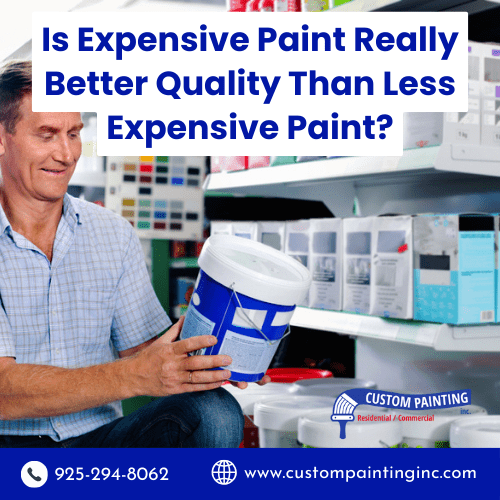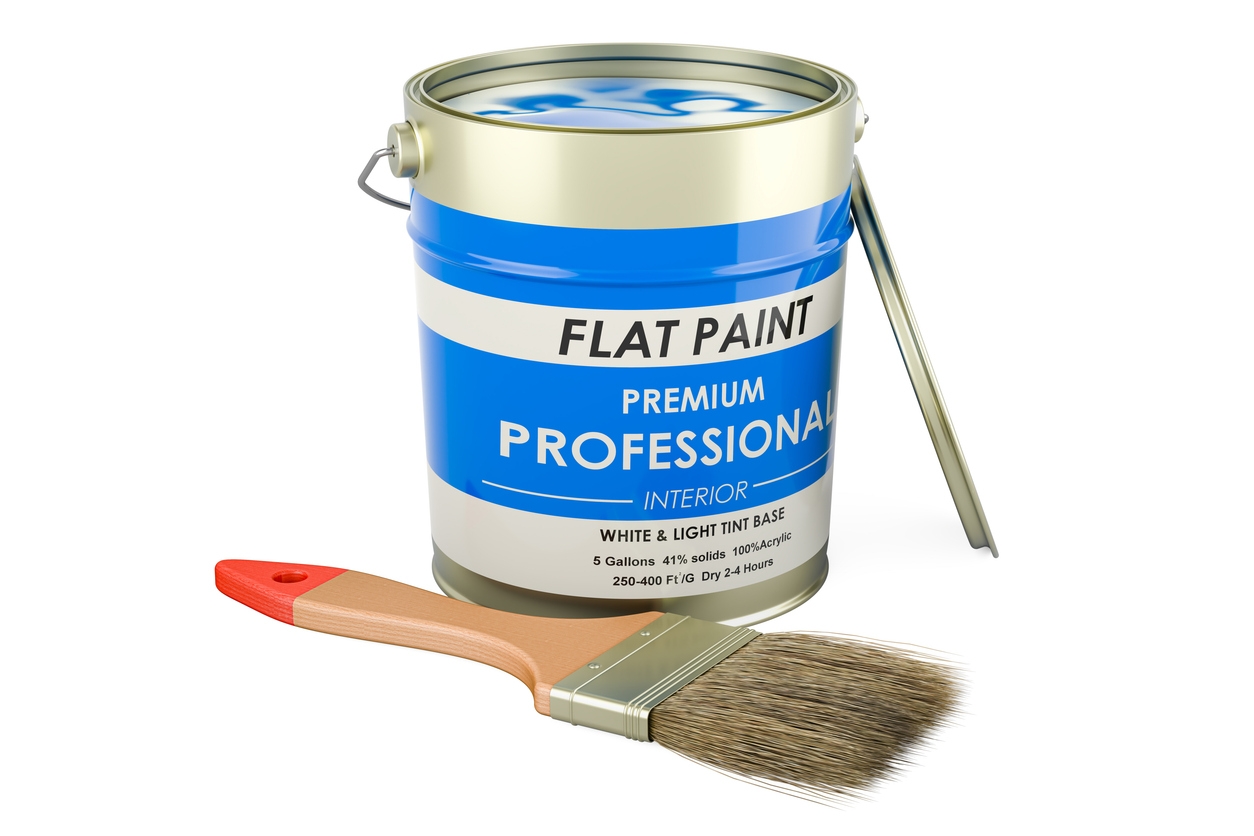Choosing the right paint can make a big difference in any project, whether you’re repainting a room, touching up furniture, or working on a creative endeavor. A common belief is that expensive paint means better quality, but is that always true? In this article, we’ll explore whether the higher price tag of some paints actually translates to better performance and finish, helping you make an informed decision for your next painting project.
Understanding Paint Composition
To determine whether expensive paint is genuinely better, it’s essential to understand the basic components that create the paint. Each component plays a crucial role in the paint’s performance, durability, and finish.
Basic Components of Paint
Pigments: These are finely ground particles that give paint its color and opacity. High-quality pigments offer better coverage and color retention, ensuring a vibrant and long-lasting finish.
Binders: Binders, also known as resins, hold the pigment particles together and help the paint adhere to surfaces. They are responsible for the paint’s durability and resistance to chipping, cracking, and peeling. Common types of binders include acrylic, latex, and alkyl.
Solvents: Solvents are the liquids that carry the pigments and binders, making the paint easy to apply. They evaporate as the paint dries, leaving behind a solid film. Water-based paints use water as a solvent, while oil-based paints use mineral spirits or other organic solvents.
Additives: These are additional ingredients that enhance certain properties of the paint. Additives can improve flow and leveling, prevent mold and mildew growth, increase drying time, or provide UV protection.
How These Components Affect Paint Quality
- Pigment Quality and Concentration: Higher-quality paints often contain more pigments, which provide better coverage and richer colors. This means fewer coats are needed to achieve the desired look, saving time and effort.
- Binder Strength: The type and quality of the binder determine the paint’s adhesion and durability. High-quality binders create a more durable and long-lasting finish, making the paint more resistant to wear and environmental factors.
- Solvent Type: The choice of solvent affects the paint’s application and drying time. Water-based paints are easier to clean up and have lower VOC (volatile organic compounds) levels, making them more environmentally friendly. Oil-based paints, while more durable in some cases, have higher VOC levels and require more thorough cleanup.
- Additive Benefits: Additives can significantly enhance the performance of the paint. For example, mildew-resistant additives are essential for bathroom and kitchen paints, while UV-protective additives are crucial for exterior paints to prevent fading.
Price vs. Quality: Key Factors to Consider
When evaluating whether expensive paint is worth the investment, several key factors come into play. These factors influence not just the initial look but also the long-term performance and satisfaction with the paint.
Coverage and Opacity
Coverage refers to how well the paint hides the surface underneath. High-quality paints often have better coverage and opacity, meaning fewer coats are needed to achieve a uniform and vibrant finish. This can save time and money in the long run, as less paint is required to cover a given area.
- High Coverage: Expensive paints typically contain higher concentrations of quality pigments, providing better coverage and richer colors.
- Low Coverage: Cheaper paints may require multiple coats to achieve the same level of opacity, leading to increased labor and material costs.
Durability and Longevity
Durability is a crucial factor, especially for high-traffic areas or surfaces exposed to harsh conditions. The longevity of the paint determines how often you will need to repaint.
- Durability: Premium paints often use high-quality binders and additives that enhance the paint’s resistance to wear, fading, chipping, and peeling.
- Longevity: Investing in durable paint can reduce the frequency of repainting, offering long-term savings and maintaining the appearance of the surface for a longer period.
Finish and Appearance
The finish and appearance of the paint can significantly impact the aesthetics of a space. High-quality paints usually provide a smoother, more professional-looking finish.
- Finish Types: Paints come in various finishes, such as matte, satin, eggshell, and gloss. Higher-end paints often deliver more consistent and attractive finishes, regardless of the type.
- Appearance: Expensive paints tend to have a richer, more vibrant appearance, which can enhance the overall look and feel of a room or object.
Ease of Application
Ease of application can affect both the time and effort required to complete a painting project. High-quality paints often offer superior application properties.
- Application: Premium paints generally have better flow and leveling, making them easier to apply smoothly and evenly. They are less likely to show brush marks or roller streaks.
- Efficiency: Better coverage and ease of application mean fewer coats are needed, reducing the time and labor involved in the painting process.
Brand Reputation and Marketing
When it comes to paint, brand reputation and marketing play significant roles in pricing and perceived quality. These factors can influence a consumer’s choice, often driving them toward more expensive options under the belief that they offer superior performance.
Influence of Brand Reputation on Paint Pricing
Brand reputation is a powerful factor in the pricing of paint. Well-established brands with a history of quality and reliability can command higher prices for their products. Here’s why:
- Trust and Reliability: Brands with a strong reputation have built trust with consumers over time. This trust translates into a willingness to pay more for a product that is perceived to be reliable and of high quality.
- Consistency: Reputable brands often provide consistent quality, which is crucial for consumers looking to achieve the best results. This consistency justifies a higher price as it reduces the risk of disappointment or failure.
- Research and Development: Leading brands typically invest heavily in research and development to improve their products. These innovations often come with a higher price tag, reflecting the advanced technology and superior materials used.
Marketing Strategies and Their Impact on Perceived Quality
Marketing strategies significantly impact how consumers perceive the quality of paint. Through various techniques, brands can enhance their image and justify higher prices.
- Premium Positioning: Brands often position their products as premium options through packaging, advertising, and promotional materials. This positioning creates an association between higher prices and better quality.
- Celebrity Endorsements and Influencers: Using well-known personalities to endorse paint products can boost their perceived value. Consumers may be more likely to trust and choose a product endorsed by a respected figure.
- Professional Recommendations: Paint brands often highlight endorsements from professional painters and contractors. These recommendations can convince consumers that the paint is worth the higher price due to its professional-grade quality.
- Customer Testimonials and Reviews: Positive reviews and testimonials from other customers can influence new buyers. Seeing others’ satisfaction with a product reinforces its perceived quality and value.
- Innovative Marketing Campaigns: Creative and engaging marketing campaigns can draw attention to the unique features and benefits of a paint brand, making it stand out in a crowded market. This can lead to higher perceived value and willingness to pay more.
By leveraging brand reputation and effective marketing strategies, paint companies can create a perception of superior quality and justify higher prices. Understanding these influences can help consumers make more informed decisions when selecting paint for their projects.
Cost-Effectiveness and Value
When choosing paint, it’s crucial to consider not just the upfront cost but also the cost-effectiveness over time. Evaluating the long-term value can help determine when it makes sense to invest in expensive paint and when less expensive options may be sufficient.
Evaluating Cost-Effectiveness Over Time
The cost-effectiveness of paint involves considering the total cost over the lifespan of the paint job. Factors such as durability, maintenance, and the need for reapplication play significant roles.
- Durability: Higher-quality paints often last longer, meaning they don’t need to be reapplied as frequently. This can lead to savings on both materials and labor over time.
- Maintenance: Premium paints are usually easier to clean and maintain, which can reduce the need for touch-ups and repairs. This is particularly important in high-traffic areas or on exterior surfaces exposed to harsh weather conditions.
- Coverage: Expensive paints typically provide better coverage, reducing the number of coats required. This saves not only the amount of paint needed but also the time and effort involved in application.
When It Makes Sense to Invest in Expensive Paint
Investing in expensive paint can be a wise decision in certain situations where quality and longevity are paramount.
- High-Traffic Areas: For areas that experience a lot of wear and tear, such as hallways, kitchens, and bathrooms, investing in durable, high-quality paint can ensure a longer-lasting finish.
- Exterior Surfaces: Exterior paints need to withstand various weather conditions. Higher-end paints offer better protection against UV rays, moisture, and temperature fluctuations, extending the life of the paint job.
- Special Finishes: When a specific aesthetic is desired, such as a high-gloss finish or a unique texture, premium paints can deliver superior results that are difficult to achieve with cheaper alternatives.
- Professional Projects: For projects where a professional, flawless finish is essential, such as in commercial spaces or high-end residential projects, the benefits of high-quality paint often justify the higher cost.
Situations Where Less Expensive Paint May Be Sufficient
In some cases, opting for less expensive paint can be perfectly adequate, providing a good balance between cost and performance.
- Low-Traffic Areas: Rooms that are used less frequently, such as guest bedrooms or storage spaces, may not require the durability of premium paints.
- Short-Term Projects: For temporary solutions or projects with a short expected lifespan, such as staging a home for sale, less expensive paint can be a cost-effective choice.
- Budget Constraints: When budget is a primary concern, selecting a reasonably priced paint that still offers decent coverage and finish can help manage costs without compromising too much on quality.
- Frequent Redecorating: For individuals who enjoy changing their decor frequently, investing in premium paint may not be necessary. Cheaper paints can allow for more regular updates without significant financial commitment.
Conclusion
Choosing the right paint involves considering factors like coverage, durability, finish, and ease of application. While expensive paints often offer higher quality and longer-lasting results, there are situations where less costly options can be just as effective. To make the best choice for your project, weigh the long-term benefits against the initial cost.
For professional advice and top-quality painting services, contact Custom Painting, Inc. today at 925-294-8062 or fill out our contact form. We’re here to help you achieve the perfect finish for your project.





